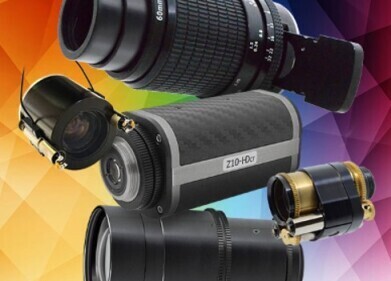Microscopy & microtechniques
System Helps Scientists Study the Effects of Changes in Humidity in the Development of new APIs
Apr 19 2018
Dr James McCabe is an Associate Principal Scientist in the Early Product Development Group (EPD) of Astra Zeneca based in Macclesfield in the UK. His research aim is to find the optimal solid form of an active pharmaceutical ingredient (API) for drug development and understand the risks and opportunities associated with that solid form. To this end, Dr McCabe is always looking for optimum instrumentation to provide the maximum amount of data.
Talking about his experience in using humidity controllers and how he settled on the use of the RH95 system from Linkam, Dr McCabe said: “I have used many humidity systems including dynamic vapour sorption (DVS) from various vendors as well as using them when making environmental X-ray powder diffraction measurements. The advantage of the Linkam RH95 humidity system used in conjunction with one of their temperature stages (THMS600) is that visual changes in crystal/particle morphology (size, shape etc.) can be observed in real time. The stage provides the added ability of then dehydrating samples via elevated temperature as part of the same experiment. This capability is also available on DVS systems, but the images are then macro as opposed to micro. An additional advantage is that in principle a single crystal of material could be assessed using the Linkam humidity system, a sample amount too small for other techniques.”
Dr McCabe's work with optical temperature stages has included the use of a new technique called TASC – Thermal Analysis by Structural Characterisation. TASC provides spatially resolved information on thermal transitions to images/movies acquired by temperature stage microscopy. It highlights any structural changes in the sample providing excellent complementary information with traditional forms of differential and modulated differential scanning calorimetry, DSC & MDSC, both being macro techniques.
Dr McCabe is optimistic for future exploitation of TASC in the pharmaceutical industry. “TASC appears to be a powerful thermo-optical technique for measuring optical changes within a sample. Glass transition and melting temperatures can quickly be measured, and complex mixed-phase systems can be assessed. I will carry out further work to apply this technique to other areas such as crystal growth (induction times), dissolution and physical stability of amorphous materials when exposed to the combination of both temperature and humidity change.”
Digital Edition
Lab Asia Dec 2025
December 2025
Chromatography Articles- Cutting-edge sample preparation tools help laboratories to stay ahead of the curveMass Spectrometry & Spectroscopy Articles- Unlocking the complexity of metabolomics: Pushi...
View all digital editions
Events
Jan 21 2026 Tokyo, Japan
Jan 28 2026 Tokyo, Japan
Jan 29 2026 New Delhi, India
Feb 07 2026 Boston, MA, USA
Asia Pharma Expo/Asia Lab Expo
Feb 12 2026 Dhaka, Bangladesh

.jpg)
-(2).jpg)
















